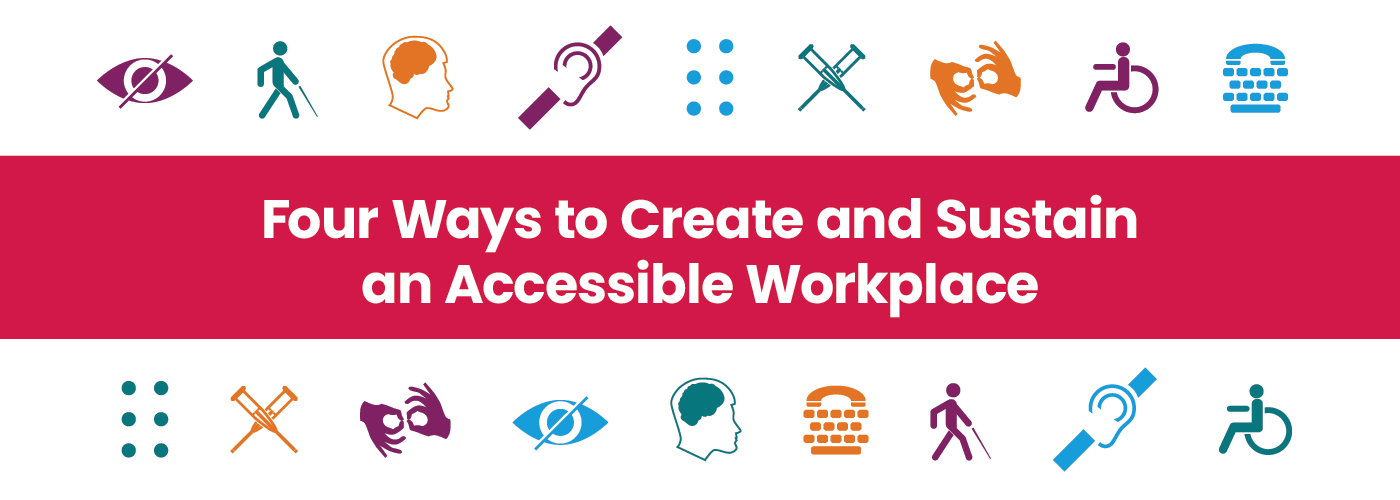4 ways to create and sustain an accessible workplace

A big part of accessibility is treating everyone equally, regardless of ability.
In the workplace, accessibility grants all employees access to both the physical locations and digital resources required to do their jobs; this includes a highly-skilled segment of the workforce –people with disabilities. Here are four simple ways to create an accessible workplace:
Ensure buildings and workspaces can be easily accessed.
Ramps, elevators, and escalators are all important, but there are other types of physical disabilities that are less thought of, like visual and hearing impairments. Organizations should have braille around office spaces for people with visual impairments and clear signage for people with hearing impairments.
Integrate assistive technologies.
Assistive technologies are necessary additions for accessibility. These are products, equipment and systems that enhance learning, working and daily living for people with disabilities. The availability of assistive technologies - like screen readers, closed captioning, and enlarged keyboards - can empower employees to be more productive and effective at their jobs.
Create accessible digital assets and websites.
Ensuring that digital assets, like PDFs, imagery, videos, and marketing collateral, are accessible to all employees is a must for accessibility.
One way to do this is to follow 508 Compliance Guidelines. This is Rehabilitation Act amendment requires all federal agencies and contractors to provide access to all information and systems retrieved electronically. Even if a workplace isn’t required to follow these guidelines, it is good practice to ensure that all digital assets are accessible to everyone.
From a business perspective, 92% of consumers are more likely to support a business that is physically and digitally accessible. For an organization to attract to a wide audience an accessible website is key. The Web Content Accessibility Guidelines are a good tool for in developing an accessible website, with instructions on things like:
- Using correct headings based on content structure
- Including proper alt text for images
- Giving links unique and descriptive names
Invest in employee education and training.
Disability awareness training should be available for all employees. This training walks employees through key legislation that has affected people with disabilities, provides basic etiquette for interacting with people with disabilities, explains how accessibility is important, and gives employees the basic tools to implement accessibility in their work. Investing in this training can increase productivity, encourage more open dialogue, and build a more inclusive culture in the workplace.
Access must be taken into consideration when designing or using anything in the workplace. “Accessibility is about making sure that everyone can partake in what the world has to offer,” said Sabrina Harmon, senior subject matter expert in Learning Solutions at SourceAmerica. “It’s about inclusion!”
To learn more about increasing workplace accessibility, contact customerservice@sourceamerica.org.
Enjoy this? You might like these stories, too: